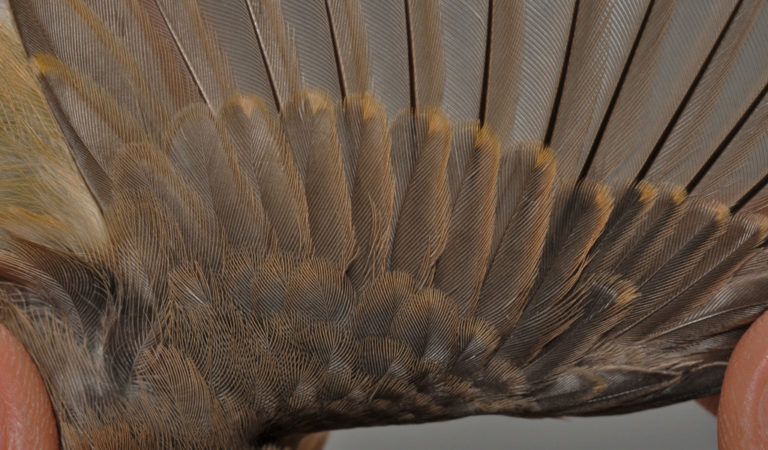

Red-breasted Flycatcher
AGE – BEST CRITERIA:

1cy September. The innermost GC8-10 are moulted post-juvenile, showing a contrast to remaining juvenile GC. Apart from being somewhat fresher and denser, the post-juvenile GC have a slightly darker centre and slightly less rufous (and a trifle more olive) edges, and lacks the distinct rufous-buff tips of the juvenile GC. [SS6985]
More Ficedula parva:
Sexing autumn
Ageing spring
Sexing spring
Moult
Ringers’ DigiGuide is sponsored by: